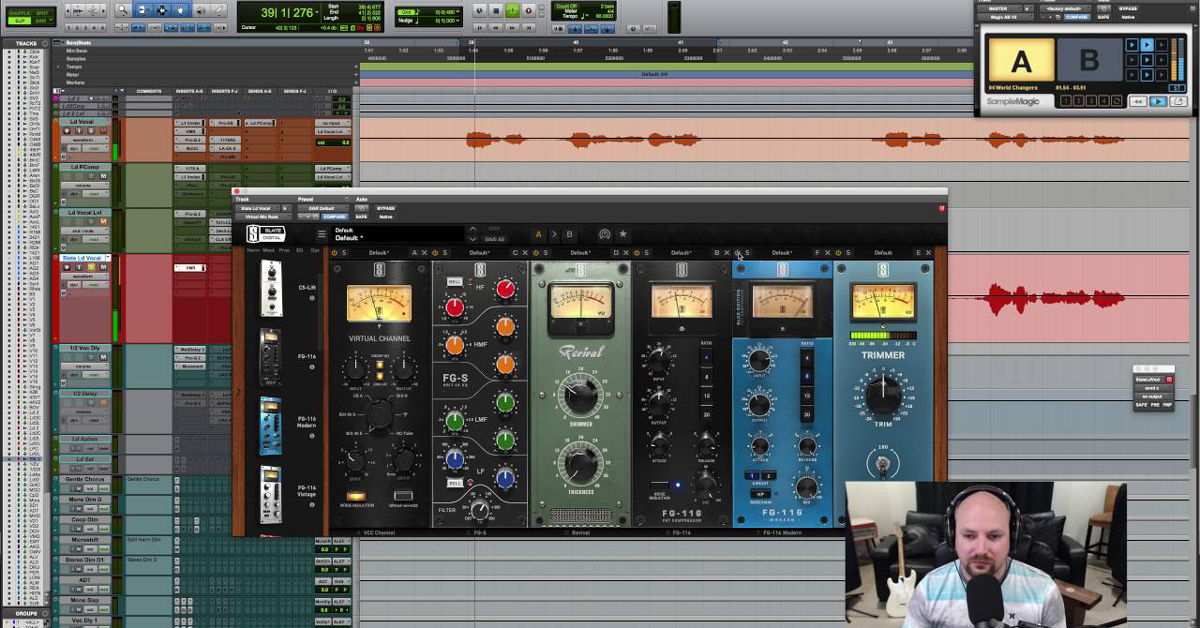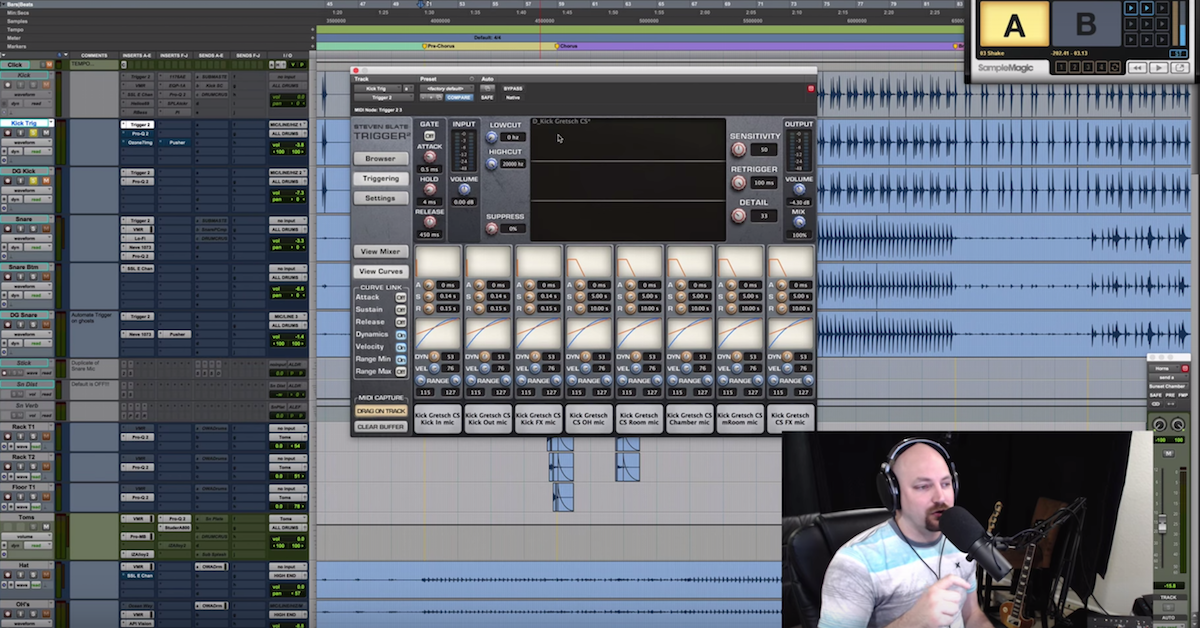5 Favorite Slate Digital Plugins (+ Mix Tips)
Article Content
Ever since the release of their groundbreaking Virtual Console Collection back in 2011 and Virtual Tape Machines plugin the following year, Slate Digital have been working hard on bridging the gap between analog and digital. It’s gotten to the point that nowadays, their emulations are “virtually” (get it?) indistinguishable from the real thing.
While audio plugin technology has come leaps and bounds in the last 10 years, the fact that I’m still using both of these plugins in every single mix I do says a lot about their quality.
On that note, let’s take a look at 5 Slate Digital plugins which every mix engineer should own:
1. Virtual Console Collection + Virtual Tape Machines
While these are two separate plugins, in my mind, they’ve always been an inseparable pair when looking to impart “the sound of analog” onto a clean, “digital” mix. So I’ve decided to bundle them together for the sake of this article.
While audio gear and plugin manufacturing in the 90s and 2000s was all about trying to make things sound as “clean” and “flat” as possible, by the time we actually achieved the goal of “digital perfection,” we realized that the end results were, quite frankly, a bit dull and boring.
Ever since, software engineers have been painstakingly trying to recreate all of the subtle imperfections, abnormalities, artifacts and distortion characteristics of analog gear in the digital realm with the end goal of merging the best of both worlds: the user-friendly functionality of digital, and the listener-friendly sound of analog.
In my book, VCC and VTM were the plugins which really sparked the “emulation revolution.” This was the first time that mixers were really convinced with the results, without feeling like there was a huge compromise to be made on CPU usage or latency.
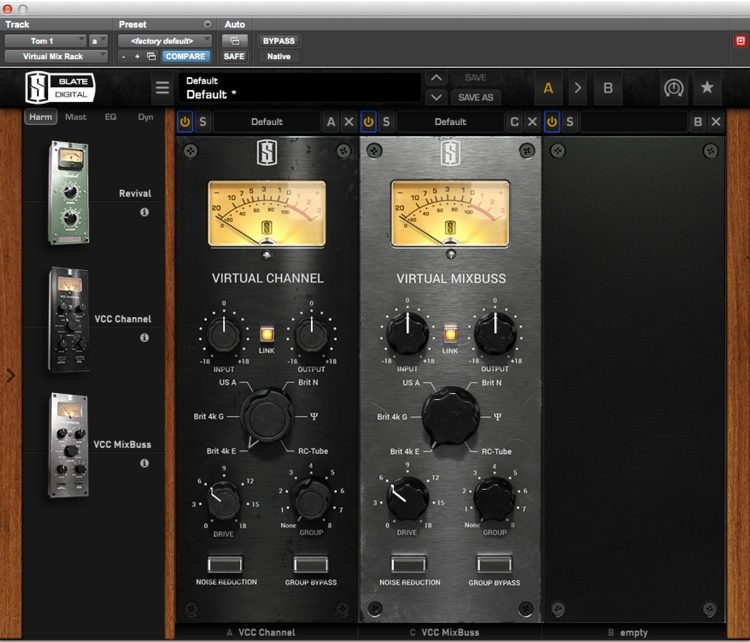
While I’m not going to go into a ton of detail on the individual usage of each plugin, the general idea is as follows: choose the console and tape type you’d like to use, then play around with how hard you’d like to hit/saturate said console or tape via the drive and/or linked in/out knobs. Simple!
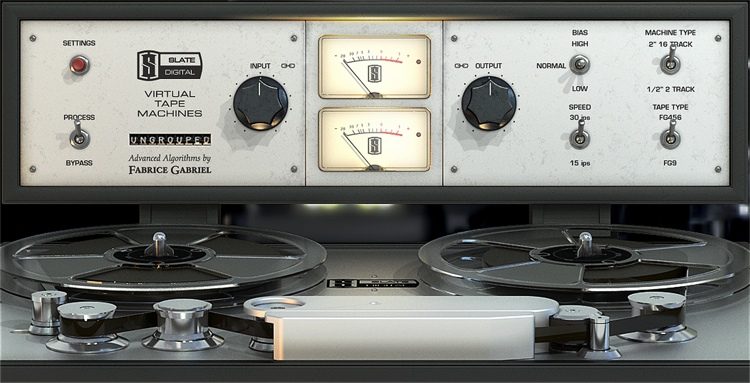
Whether you’re after the punchy, in-your-face sound of SSL, the warm, “round” sound of Neve, the smooth high end sheen of +9 tape, or the fat low end of 456, these two plugins have you covered, and will do wonders towards bringing your mixes to life!
My Top Tips for Using the VCC and VTM Plugins
Too much of a good thing: the key to getting the best results out of pretty much all analog emulation software on the market is to use it tastefully. In small doses, console and tape saturation can add wonderful warmth, smoothness, punch and glue to a mix, but when pushed too hard, can totally undo all of your work towards achieving a tight, clear and transient mix. Long story short, if you’re really hearing it, you’re probably using too much!
2. Virtual Buss Compressors
One of the keys to getting individual instruments to work together as a single unit in the form of a tight, cohesive stereo mix lies in how you “glue” the whole package together on the mix buss, namely by using buss compression.
Slate Digital’s VBC offers faithful digital recreations of 3 highly sought after hardware buss compressors: the FG-RED (based on the Focusrite RED), the FG-GREY (based on an SSL 4000 buss compressor), and the FG-MU (based on the legendary Fairchild 670).
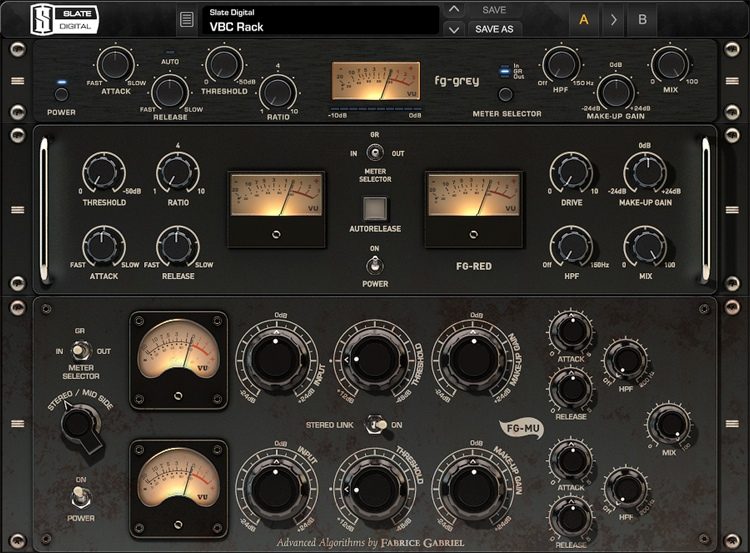
Again, in classic Slate fashion, these plugins aren’t just about the compression (although they are all truly awesome compressors). Even with no compression applied, simply inserting an instance of one of these units across your mix will impart some magical analog juice across your mix and help bring everything to life.
My Top Tips for Using the Virtual Buss Compressors Plugins
Multi-buss glue: while mixing more organic genres such as rock or metal, it’s often a good idea to somewhat “glue” your individual instrument groups together on their respective busses before applying a final stage of buss compression on the master buss. With an SSL style buss compressor, 2-4 dB of gain reduction at a slow attack time of 30ms, fast release time of 100ms, and ratio of 4:1 tends to work wonders on drums, guitars and full mixes alike.
3. Custom Series Equalizers
With tons of incredible EQ options on the market to choose from, it takes something truly special and unique to stand out and make a mark. Meet the Custom Series Equalizers.
While pretty much all of the SSL, Neve and Pultec emulations available nowadays are great across the board, engineers tend to have a favorite EQ band on each unit, and will often have to chain multiple EQs together to get the best out of each of them and reach their desired end result.
The goal with Slate’s Custom Series EQ was to combine the best bits from each of the common “go-to’s” under a single roof, resulting in an all-in-one “Frankenstein’s monster” of an equalizer which can easily replace the several EQs you’d typically use when shaping your sounds.
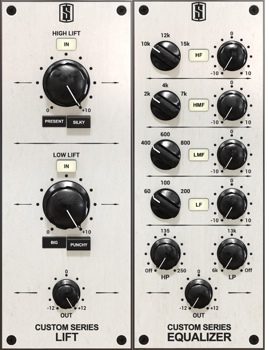
Similarly, the accompanying Custom Series Lift plugin which operates on the same “all-in-one solution” principle provides a simple, elegant solution for applying broad, musical low and high boosts to tracks while totally eliminating the overthinking that often goes into selecting which frequencies to boost.
My Top Tips for Using the Custom Series Equalizers Plugins
Keep mixing simple: with a well-recorded sound source, you often don’t have to go crazy with a ton of subtractive EQ in the mids, and often just applying some broad, musical high end brightening and low end fattening will get you most of the way there. The Custom Series Lift is a great plugin for this purpose, as it takes a lot of the guesswork out of the equation and helps you listen like a listener. Just boost the knobs to where they sound good and call it a day!
4. Virtual Tube Collection
Continuing their legacy of “making digital sound analog”, Slate Digital once again hit it out of the park with 2017’s Virtual Tube Collection.
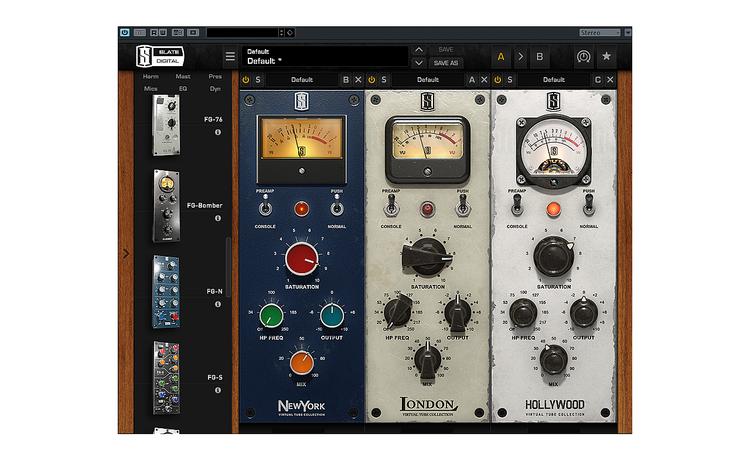
While the aforementioned VCC and VTM are more of a “subtle enhancement” deal, the Virtual Tube Collection is all about in-your-face grit and distortion. With 3 distinct flavors, including “London,” “Hollywood” and “New York,” the VTC is fantastic for adding some great color, warmth, depth and vibe to individual tracks or an entire mix.
My Top Tips for Using the Virtual Tube Collection Plugins
Low end not translating? A common issue in modern mixing is low end elements such as basses and 808s not being audible through the smaller speakers built into laptops and phones. While the physical limitations of the gear often means it’s technically impossible for them to produce these low frequency sounds, applying some saturation to your bass instruments via something like VTC will help bring out the upper harmonics, filling in the gaps and giving the listener the illusion of bass on such systems.
5. Virtual Microphone & Preamp Collections
While somewhat intrinsically tied to their Virtual Microphone System hardware (and therefore not really accessible to everyone) I can’t go without talking about my favorite Slate plugins to date, the Virtual Microphone & Preamp Collections.
In 2016, Slate Digital released their long awaited ML-1 microphone and VMS-ONE preamp combo. In short, the VMS hardware is sonically flat and neutral, and when paired with the Virtual Microphone Collection & Preamp Collection software, gives users access to tens-of-thousands of dollars worth of perfectly modeled expensive vintage microphones and preamps for the price of an average condenser microphone.
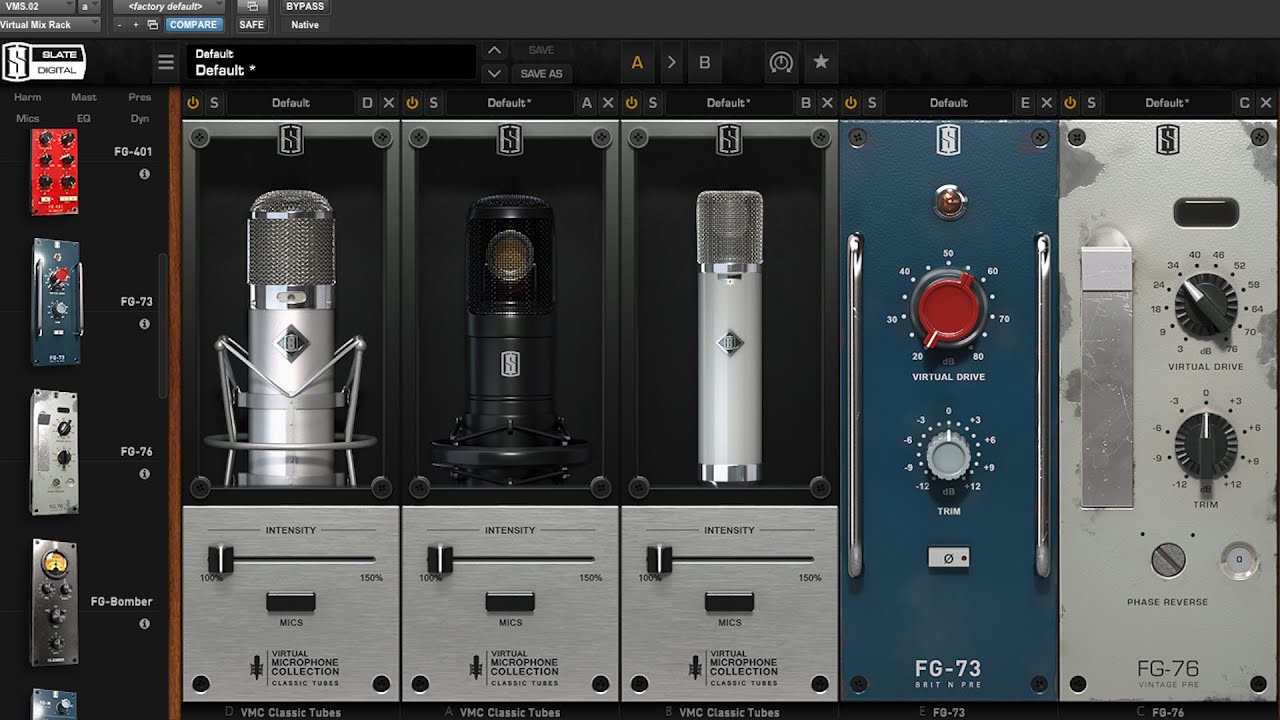
Upon getting my hands on the VMS shortly after release, I ended up selling all of my other microphones. Why? Because the search was finally over. Finally, a single microphone that could cover all of my recording needs without leaving me wanting.
Always dreamed of hearing the crisp high end sheen of a Sony C-800 on your rap vocals? Got it. Wondered what a vintage U47 would sound like in front of your guitar amp? Try it. Want to shoot out all of the best microphones in the world and find the perfect sound for your voice? Sorted. And in a matter of minutes!
My Top Tips for using the Slate Virtual Microphone & Preamp Collections
Watch your input levels: an important thing when using the VMS software is to make sure that you’re hitting the plugins at the correct input level. Make sure to read the plugin manual and stick to the recommended rms if you’re looking to achieve the most accurate saturation characteristics for each microphone and preamp emulation.
Conclusion
I assure you, I’m not associated or affiliated with Slate Digital in any way, shape or form. I’m simply passionate about their products, because they’re all so good!
If you haven’t already, definitely make sure to check out Slate’s “All Access Pass,” which includes all of their plugins, tutorials, synths, amp sims, samples and more for the super-affordable monthly price of $9.99. It’s a killer deal, and will cover absolutely all of your mixing needs for a much lower cost than if you were to go and buy dozens of individual plugins.
What are some of your favorite Slate Digital plugins? Let me know in the comments below.





